[Full disclosure – at the time this article posted, the author was employed multiple times in the Education Department of the Andy Warhol Museum as recently as June 2009, teaching screen-printing to high school students.]
Last week, Shepard Fairey opened a massive retrospective exhibition at Pittsburgh’s Andy Warhol Museum. “Supply and Demand” drew a sold-out opening night crowd that watched Fairey DJ alongside Z-Trip while sporting a swank three-piece suit. In the months prior, Fairey and his team toured around Pittsburgh wheat-pasting his familiar designs on building facades both permitted and not, and across from the museum he installed a temporary mural over top of a pre-existing mural by a younger local artist. The silent, creeping presence of Fairey’s designs around the city felt eerily similar to the lead-up for the G20 summit this past September, in which faceless PR firms delivered meaningless graphics touting business and lifestyle opportunities to cover dozens of vacant storefronts in downtown in an attempt to scrub the visual landscape. All of this new wallpaper gave an impending and queasy feeling to anyone paying attention: Pittsburgh, once again and without consent, would play host as a playground for the powerful.
Fairey is one of the most recognized designers in the U.S. today, and the litigation surrounding him and the image sourcing for his art is a circus of it’s own. Most bizarrely this spring for Pittsburghers (and anyone else who noticed) local designer Larkin Werner was sent a “cease and desist” (later recinded) by Fairey’s legal team over the use of the word “Obey” in conjunction with the homespun “Steelerbaby” kewpie doll for sale on the internet. That, as well as prior stumbles in image use and Fairey’s latest snafu with the Associated Press, has highlighted some interesting points about Fairey’s privilege as a celebrity and artistic image sourcing in general. Many have been quick to smirk at the perceived appropriateness of Fairey’s work in a museum dedicated to Andy Warhol, himself a controversial, multi-disciplinary artist with a mind for business. In fact the museum has a history of bringing stimulating and provocative content to Pittsburgh with consistency and an acute sense of history and context. In the case of “Supply & Demand”, however, the whole drumroll and presentation feels scripted and aloof.
On top of the absurd legal battles keeping Shepard Fairey’s lawyers and critics busy, a wealth of debate about whether or not the artist’s work is “fair use” or even “plagairism” has been steadily sprouting on blogs (like Justseeds‘) for some time. Often, the accusations fly from the keyboards of other artists, particularly printmakers who consider themselves more engaged in social justice work than Fairey appears to be. It’s easy to come off as jealous and spiteful “haters”, but as printmakers perhaps what we want most from Fairey as a “political” artist – and don’t get – is an analysis of capitalism and its ills that aligns with our own. We want to look at his work, with it’s alluring red and black imagery, apparently focused signifiers, and “underground” origins and find an ally in this struggle.
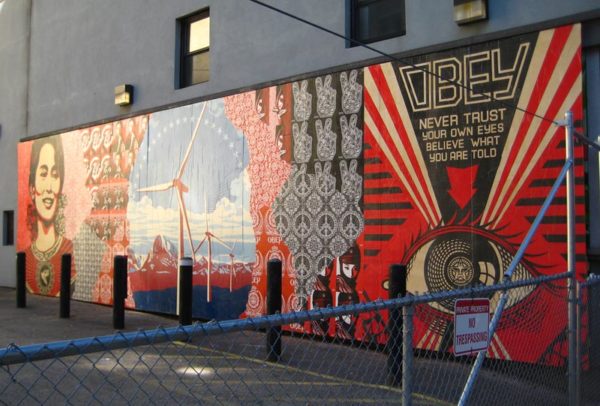
But we don’t find that ally in Shepard Fairey. Instead we find a depoliticized and fairly macho entrepreneur, throwing history in our faces and proving to us that, quite frankly, it’s easy as hell to make a nice profit off of the “look” of something. If anything smarts more than the annoying sting of Fairey’s slick fashion line or the Fuji/Obey track bike, it might just be the sickening feeling of watching someone like Fairey produce color-coded images with little resonance, take handsome promo shots for Vogue Italy after pasting his work on a failed urban storefront, and revel in his street cred and controversy while museums that should know better pander to his status. What the rest of us get from “Supply and Demand” is nothing more than a slick package of redundant imagery, and the Warhol does a surprising disservice to its visitors by touting the work in this exhibit as politically relevant social critique. The best idea I suppose one could take away from “Supply & Demand” is one about how easily we can be sold image and identity, for at it’s essence the exhibit is a retrospective of Fairey’s “Obey” brand name.
It can’t be said that I went to see the new show without prior bias, nor can I refrain from admitting that I appreciated the two cases of Fairey’s oldest drawings and related creative ephemera. Yet, besides the usual critiques I might have had with Fairey’s past work, I felt something else while walking around the museum, and perhaps a friend said it best: “It just feels like another Dude making work with beautiful women in it” – and, I would add, a short catalog of images of power. Something that doesn’t get said about Fairey’s work very often is that he easily typifies a tired “boy’s club” mentality regarding art. Women, if they appear in his work at all, almost exclusively do so as beautiful faces and bodies. Guns, tanks, machines, fists and stern faces proliferate. It’s a troubling feeling to be standing in an exhibit so obviously full of machismo, but the idea hadn’t occurred to the curators: as the captioning paragraph to a large image entitled “Arab Woman” proclaims, “Fairey’s commitment to challenge preconceived assumptions and stereotypes – in this instance about gender and culture – underlines his engagement with the most pressing issues of our time.” Was I just missing something? In another room I found a celebration of men in music, including a wall of portraits of well known and successful musicians: Flava Flav and Chuck D, Slick Rick, Tupac Shakur along with Joe Strummer, Ian MacKaye and others. Debbie Harry appeared a token addition on one end, not far from a close-cropped shot of some apparently revolutionary panties. Perhaps what we’re seeing here is just a selection of Fairey’s own favorites, and the man is welcome to listen to, be inspired by, and illustrate whatever he likes. The impression it left, however, was of having visited the bedroom of an enamored teenage boy still coping with issues of sexuality and gender in his surroundings.
Contrary to the hype text on the walls of the Warhol, I’ll offer that excitement about Fairey’s show doesn’t stem from an underlying genius to the current work or even audience expectations of something terribly new – and this is exactly where one can locate Fairey’s working method. People love “Obey” like they love Bath and Body Works, Hot Topic, or American Eagle Outfitters. Walking into “Supply & Demand” is like walking into a store in the mall: the consistency is the reason for continued purchases and branded enthusiasm, and Fairey’s work is a brand you can buy into with ease. I think in this light it’s clear that Fairey is a master of business sense, a shrewd calculator possessing a design understanding which manages to appeal to a set of visceral cues that imply “revolution” as well as the sexiness of grafiti or street art. To this end, Fairey deftly removes dialog and context from his work, and the result is slick, ready-to-wear merchandise. Viewers of a portrait of a young Bobby Seale, captioned as “co-founder of the Black Panthers”, don’t even have to care who the Black Panther Party ever was, it just looks cool. The real power in Fairey’s work, the power flexed not just on these museum walls but on walls all over Pittsburgh, lies in his ability to pander to deeply rooted consumer desires: many people want the t-shirt without the politics, the image without the struggle. Rather than analyze this tension, the Warhol cheerleads Fairey’s work without pause, bringing into question whether curatorial motivations had more to do with the artist’s celebrity than with anything his work might bring to the table.
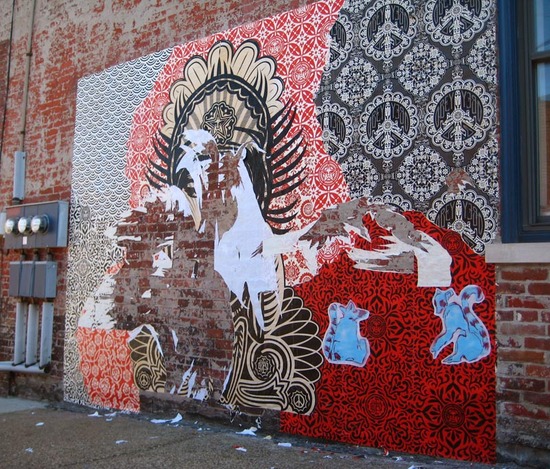
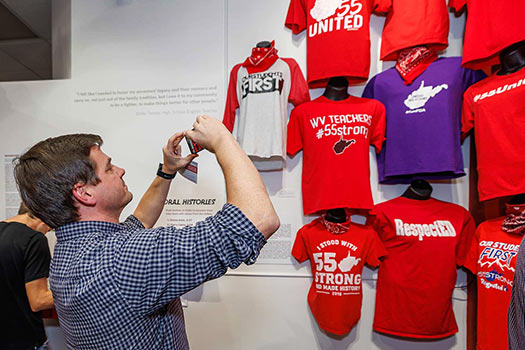


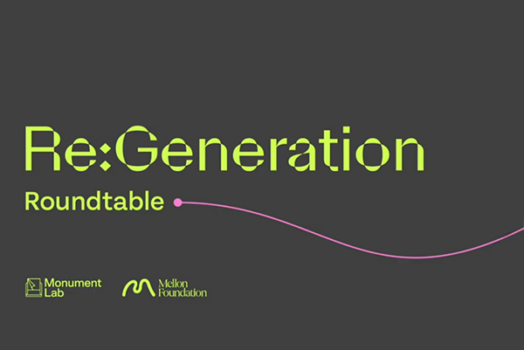
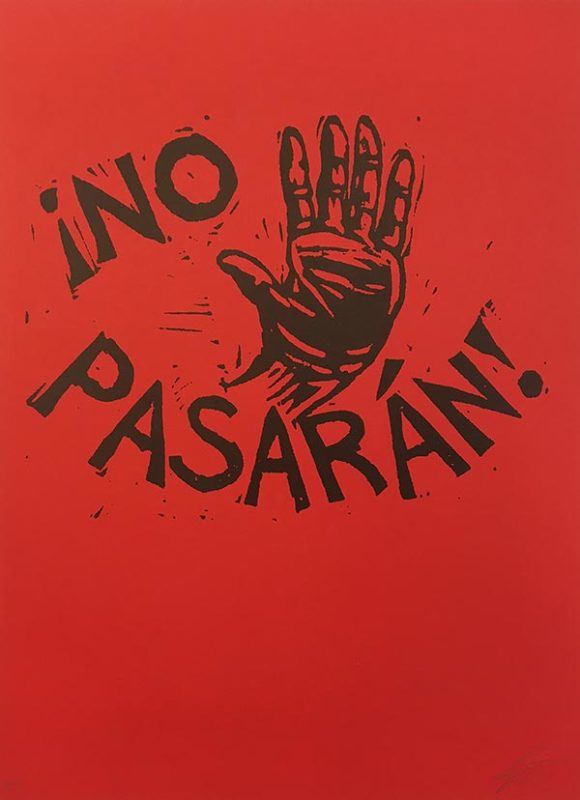
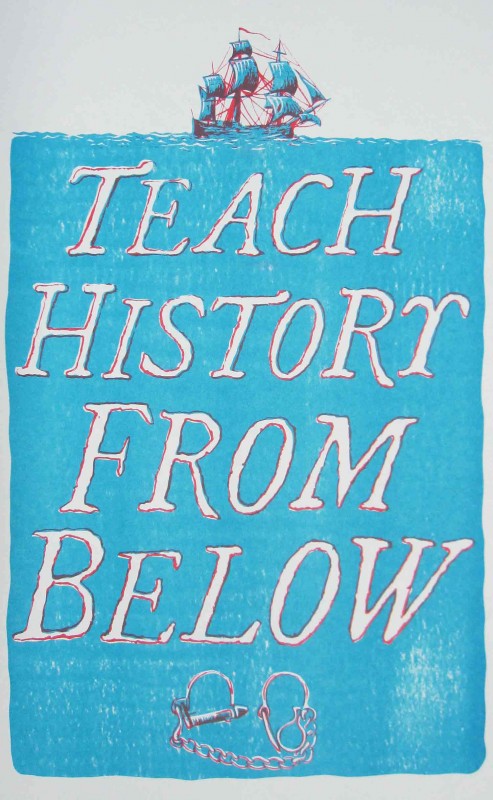
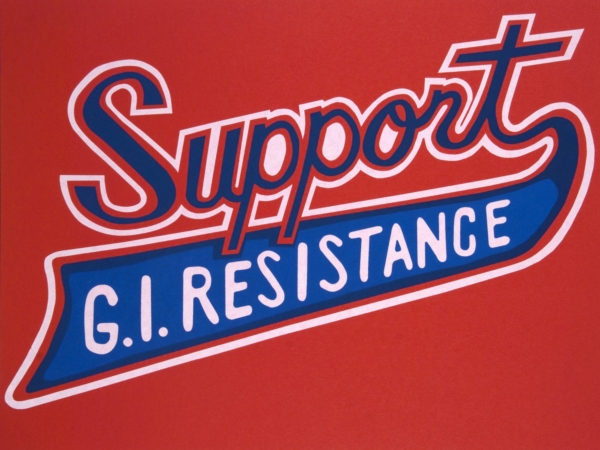
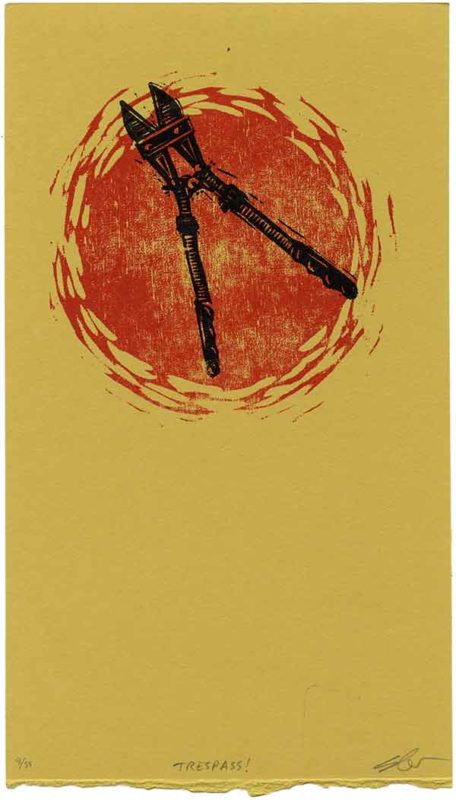
Something that I remember from the press literature, that struck me as pretty well encapsulating Fairey’s thinking, was that, paraphrasing his own words, he wanted to present this provocative imagery to the audience without telling them what to think. I always got the sense reading his own take on his work that Fairey was giving himself way too much credit for the purity of his intentions, and that statement in particular was so transparently dodgey that it seemed like a confession- “I don’t tell anyone what I think because I don’t want to have to think anything, and if I do think it, and they don’t like it, it might be scary and not sell as well”. The problem here for me isn’t just that he’s commercial. It’s that he’s commercial, but purports to be something really engaging. And moreover, he seems to do it for the sake of, of all things, commerce.
Good write up. People need to keep of the debate about how he’s a scmuck and sometime soon we’ll be rid of his B.S.
Dude, just chill out and enjoy the art. Who cares if it doesn’t, like, address gender issues and oppression and shit? I mean, it looks cool!
For what it’s worth (probably not much to anyone other than myself), I’ve ALWAYS found Fairey’s work trite & he has absolutely NO street cred w/ me. His early stickers were spread around for much the same reason as the current work – w/ NO political purpose whatsoever: just to spread his brand name. Given that I work at the Warhol, this is yet-another embarrassment that exemplifies just how shallow the place can get. After all, they hosted the G20 scum so they cd rub elbows w/ the rich & famous. Remember the Glenn Ligon show? He was one of the few black artists that the Warhol presented – precisely b/c he, too, like Fairey, is just another shallow exploiter – in this case of black culture. Gee, was I surprised to ‘learn’, from none other than Warhol director Tom Sokolowski, that political work in the museum is “exactly the same as political work out on the streets” (or some such). In other words, when you show yr pictures at the Warhol there’s always the chance that you might be shot w/ a taser or rubber bullets, etc.. NOT. In other words, the Warhol is the perfect place for Fairey. He might not want to tell people what to think, but he certainly wants to tell them what to buy! By the by, a friend of mine in California tells me about buying Fairey work that “If i get a poster for 45.00 in a year I can get about 800.00 for the same poster.” I refuse to do even that.
really appreciate this great article! Why is Pittsburgh so vulnerable? Runs deep, I suppose.
Great point about the awareness of compulsive masculinity; thanks for acknowledging that nagging, but vague sense of disregard that I feel (and have learned to I punch in the face and tell to stop being such a pansy) when leaving gallery openings.
Banksy’s way better 🙂
Nice post. I was walking around Pittsburgh recently and kind of weirded out by all the Shepard Fairey everywhere.. now I see what was going on!
Love the top image of his work partially turn down with Mary’s blue animal wheatpasted over it. Next time he has a show it would be good to white wash over all of his “promo” street art (a.ka. like the Public Ad Campaign) and put meaningful street art over it. He has become a very tired act.
Nicolas – just to clarify, the animals (lemurs!) aren’t Mary’s, they are the work of another local artist… most of Fairey’s murals have gone unchallenged but this one took a real beating.
This was a really great and perceptive critique! When it comes down to it Fairey’s early “Andre the Giant Has a Posse” sticker really sums up his political intent- zero… He has never had a political intent, and his use of revolutionary signifiers is just another usurpation of the hip cache of vacant rebellion.
Great article Shaun!
the wheat paste posters say it all, that is, there’s nothing going on in this work. No intelligence, no content, and certainly no originality. A freshman textbook of posters from Cuba is the depth of his “imaginative exploration of style’ The work is shockingly fascist in appearance. I don’t mind him making t-shirts and ripping off the latest fads in streetwear, but calling it art is a bad joke.
Thanks for taking the time to write this, Shaun. I saw the show today and had many of the same impressions. Some aspects of his work I find beautiful, but in the same way I find beauty in well-made packaging. He seems confused, frankly. He mixes up positive images of people rebelling,(I saw a Frans Masereel image with Obey Giant over it, among others) with negative images of abuse of power (Stalin, Mao, war, etc.), with images of children holding rifles, all in the same style and abbreviated palette with sarcastic, doublethink slogans. The images of women particularly bothered me, because he portrays women as sexy objects just as much as any glossy magazine, and the women in hijabs suffer from Orientalism, as in Said’s analysis of a colonialists’ point of view. While I understand that putting the logo on every single print is useful for branding, it starts to feel like a Giant security blanket after a while, covering things up and making them warm and cozy. A popular quote from Gauguin says that “art is either plagiarism or revolution,” and if that’s true, I think I know which side this body of work falls on.
good critique of the show and his work but I like his work visually..its accessible and interesting and it being that also perhaps makes political issues and causes accessible to the masses too. I get that he probably doesn’t really have street cred… but when did the art world start looking for street resume and ID’s? I think perhaps those doing great silkscreen work (such as Justseeds) should continue and ask him to start giving grants….make him a friend and not an enemy… speaking of— he his helping or his studio/crews do images vs. some of the messed up Sheriff Arpaio immigrant bashing happening down in Arizona as well as providing hella posters to all the May Day marches in LA.
I know all the Just Seeds people do that on a regular too…but let’s appreciate what he COULD and can do.. make social change interesting to 1000’s of young people.. yes, it needs the info behind it, but perhaps lets give suggestions to have each shirt and sticker have info on the back…. how he can start doing grants and more special projects connected to specific causes, etc.
But hey, what do I know..you all are in the silkscreen art trenches everyday…. i just organize… LOL!
just some thoughts, thanks!
Thanks so much, Shaun, for articulating so much so well, and for creating a possibility for other people to talk about this creepiness.
Well articulated, Shaun. Thanks for writing this.
Fwiw, I remember an interview with a founding member of Black Panthers talking about their presence in Berkeley in 60s. They were selling Mao’s Little Red Book at the gates to campus, mostly to scare people. They never read it, they just knew what it would signify.
Next to all the important points you raise, I think Fairey has done damage to the practice of art everywhere by brazenly lying in his copyright case. I hope his shenanigans don’t set back the right of fair use.
Everyone seems to dis the guy because he’s not what they think he should be. So what? He found a easy, safe concept and it caught on. Is that his fault that it sells? “We” bought it. “We” put him up on the pedestal. And he’s taking it to the bank. Welcome to America. Do I think he’s an awesome, talented artist? No. But he’s spun a really good product. He’s put lots of work into it over 10+ years, now he’s in a museum. Hard work pays off. If you think he should be talking about “issues”, you’re barking up the wrong tree. That was never his thing, issues change and his generic rebellion does not. His use of iconic images does not, in any way, mean he is behind them. He uses images that have already paved the way to our brains. Beautiful marketing. He’s not an artist in the way people want him to be. I think he’s just a successful business man. Power to the people! TM.
Superb Page! Keep up the top work!
Art is art. It’s meant to be discussed and debated over.